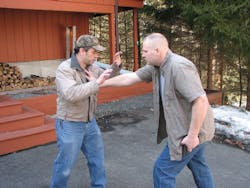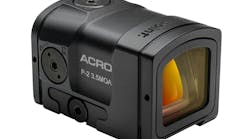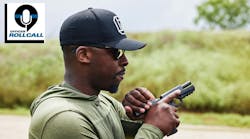We challenge people with handguns all the time. Often they comply, occasionally they have to be shot, and not infrequently they don’t comply but lower their threat level, forcing us to also transition to a lower-level force option. These events usually happen at very close distances and there’s no time to re-holster the handgun. Often there’s no time to access another weapon either, forcing you to deal with the suspect with empty hands.
Now, I can hear some of you saying: “Just re-holster the gun, for cryin’ out loud!” And some more of you adding” “Only an incompetent can’t re-holster quickly”. It is true that we should focus more than most of us do on rapid re-holstering skills (not that these aren't fraught with risk themselves, but that's another story). However there are situations when the situation is evolving too fast for reholstering to be practical, as a simple close-quarter simulation will prove. I challenge anyone who says "Just re-holster" to actually run force-on-force simulations at real speed and close distances to verify for themselves just how fast these situations move compared to how fast you, or the officers that you train, can actually re-holster with absolute reliability. I know that you'll come to see that sometimes there just isn't time. For those times, let’s teach a technique that’s safe rather than one that’s inherently unsafe. If we teach nothing I can guarantee that your officers will do the instinctive thing, which is extremely unsafe. And unfortunately I've also seen this instinctive and very unsafe thing actually taught as the desired response.
Precisely a situation of this sort occurred several years ago in a case in which I was asked to consult. During a raid on a suspect’s house where the suspect was known to posses a gun, deputies entered the residence (guns drawn, as you'd expect) and encountered the suspect who came at them aggressively, waving his hands. The deputies initially (and properly, I believe) challenged him with their drawn handguns, but as the suspect go closer it became clear that he was unarmed. Not being able to retreat (for reasons that are immaterial here but were quite real), and not having the time to re-holster before the suspect was on top of them, the closest deputy kept his handgun in his strong hand, lowered the gun, and engaged the suspect with his empty off hand. As he so engaged, sympathetic muscle contraction caused the strong hand to fire his handgun and he shot a fellow deputy.
This deputy did, after all, what he was trained to do, and what so many instructors and “tactical” schools teach: leave the handgun in the strong hand and use your non-dominant hand to strike or direct the suspect. Seriously, this is a commonly taught technique! And I trust that most readers will see the glaring faults in it.
What’s wrong with this tactic? Only that it’s all but guaranteed to result in the handgun being discharged as the weak hand goes to work engaging the suspect. The cause is the widely known phenomenon of sympathetic muscle contraction. That is: under stress, a vigorous contraction of one hand will often trigger a similar but involuntary contraction of the other. When you strike or grab someone with your non-shooting hand, the hand holding the gun will also contract…including contracting the trigger finger. This is a well documented and involuntary phenomenon, one that occurs even if the trigger finger is in register on the frame, and thus you can’t completely train it away. Back in the 90s there were trainers who denied this phenomena, but no one does now. (However, because the chance of it happening is related to the stress the officer is under, you can somewhat mitigate its probability with realistic stressful training.)
So what’s the solution? What’s a better technique? I first saw the answer in an article by Gary Klugiewicz in the November/December 2000 issue of The Law Enforcement Trainer (the publication of the now-defunct American Society of Law Enforcement Trainers.) To ease you into it, think of what we’ve all been trained to do with long gun to empty-hand transitions. Slung or not, we lower and control the shotgun or rifle with our support hand and use our strong hand for empty-hand maneuvers (or to draw a handgun.) Well, the same exact principle applies to the handgun. We simply withdraw our dominant hand from the handgun, leaving the handgun in the support hand, and inherently in a position in which no matter how hard we squeeze, the gun cannot be fired, and use our strong hand for whatever empty hand tactics are called for. The accompanying photos illustrate this.
This technique has everything going for it: It's fast, it's instinctive (with minimal training), and it has commonality with long gun training. Oh, and it's safe: safe for the suspect, and more important, safe for innocents, including fellow officers on the scene (and the scene of a flying bullet is a mile or so!).
I have a hard time understanding why anyone still teaches the old, inherently unsafe technique.



